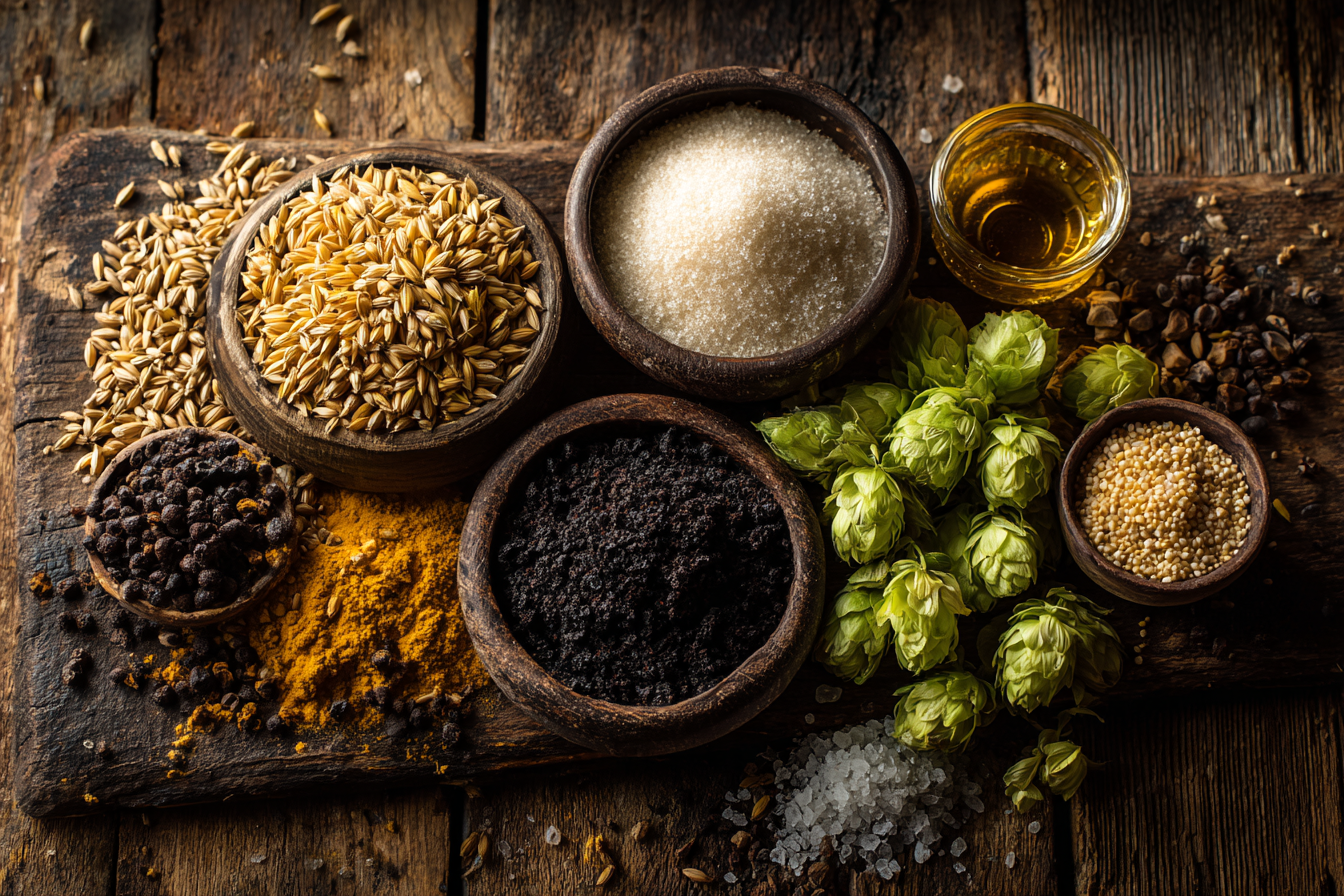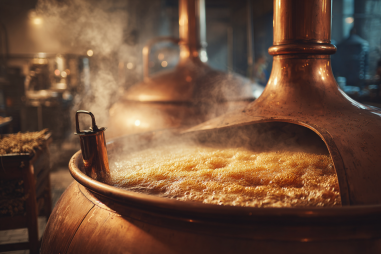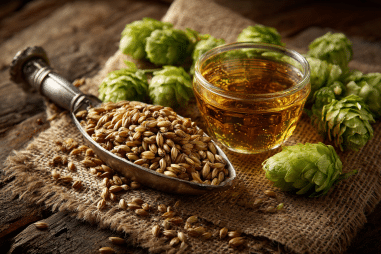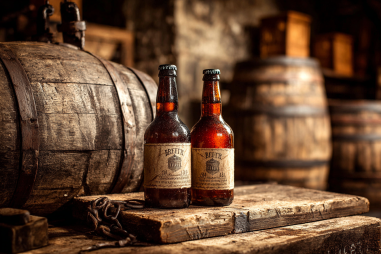Wee heavy beer, a rich and hearty style originating from Scotland, has captivated beer lovers with its deep malt character, luscious sweetness, and warming complexity. At the heart of what makes a wee heavy truly authentic lies its carefully chosen ingredients. Brewers seeking to craft this robust Scottish ale must navigate a selection of malts, hops, yeasts, adjuncts, and even water chemistry to achieve the depth and balance that define the style. Let’s explore the key ingredients that combine to create the iconic flavor profile of wee heavy beer.
Overview of Normal Beer Ingredients
Before diving into the ingredients that specifically shape wee heavy beer, it’s essential to understand the basic building blocks common to most beers. Fundamentally, beer is made from four principal ingredients:
- Malt: Typically malted barley provides the fermentable sugars and backbone flavor.
- Hops: These flowers add bitterness, aroma, and balance beer’s sweetness.
- Yeast: Responsible for fermentation, converting sugars into alcohol and producing flavor compounds.
- Water: Making up the majority of beer’s composition, water chemistry profoundly influences mouthfeel and taste.
In addition to these, some brewers use adjuncts like sugars or other fermentable materials to enhance characteristics or adjust body. Understanding how each ingredient plays a part allows us to appreciate how wee heavy brews differentiate themselves.
Specialty Malts Used in Wee Heavy
Malts form the backbone of wee heavy beer. Unlike lighter ales, wee heavies depend on a rich malt bill to achieve their characteristic sweetness, full body, and dark amber to deep ruby color. The specialty malts employed are central to this.
Typically, brewers start with a base of pale malt to provide essential enzymes and fermentable sugars. From there, a significant portion comprises specialty malts such as:
- Crystal/Caramel Malts: These roasted malts add caramel sweetness, raisin-like fruitiness, and enhance color. Caramel malts in the range of 60-120 Lovibond are common.
- Brown Malt: Offering nutty, toasty, and chocolate undertones, brown malt lends complexity and warmth.
- Munich or Vienna Malts: These malts provide biscuity, bready notes and bolster malt complexity.
- Peated or Roasted Barley (occasionally): Some brewers add subtle peat-smoke or roasted barley for a hint of smokiness or a deeper hue, although heavy roastiness is generally avoided.
The careful layering of these specialty malts gives wee heavy beers their dense, syrupy mouthfeel and signature malt-forward profile, setting them apart from brighter, hop-focused ales.
Hops Varieties and Their Role
Hops in wee heavy beer serve a more restrained but equally important function compared to many other styles. Because wee heavy ales emphasize malt sweetness and richness, hops are chosen primarily for balance rather than aggressive bitterness or bright aromas.
Traditional Scottish ales, including wee heavy, often use earthy, floral, and herbal hop varieties such as:
- East Kent Goldings: Known for their mild, floral, and slightly peppery character.
- Fuggle: A classic English hop with gentle woodsy and fruity notes.
- Target or Challenger (for bitterness): Sometimes used to add firm but smooth bitterness.
Hop bitterness in wee heavy beers is moderate, typically measured around 30-40 IBUs, just enough to counterbalance malt sweetness without overpowering the palate. Aromas tend to be subtle, allowing malt complexity to shine.
Yeast Strains for Fermentation
Yeast selection plays a vital role in the flavor and mouthfeel of wee heavy beers. Most traditional Scottish ales rely on English ale yeast strains that ferment cleanly while adding some fruity esters and moderate phenolic complexity.
Typically, brewers use:
- English ale yeast strains: These produce balanced profiles with subtle fruitiness and mild earthiness, complementing rich malts.
- Scottish ale yeasts: Strains specially cultivated for Scottish styles often yield a slightly malt-forward fermentation character with low to moderate attenuation, helping maintain body and residual sweetness.
The yeast’s attenuation level typically ranges between medium and low, leaving enough residual sugars to keep the beer full-bodied and sweet. Additionally, some brewers may allow for a secondary fermentation or aging to mellow and develop complexity further.
Use of Sugars and Adjuncts
Adjuncts in wee heavy beer often include various forms of sugars to enhance alcohol content, body, and complexity without thinning the beer’s mouthfeel. Unlike lighter ales where adjunct sugars might lighten body, in wee heavies, sugars are used judiciously to complement malt richness.
Common adjuncts include:
- Candi Sugar or Inverted Sugar: Used to boost alcohol without excessive heaviness, ensuring a smoother finish.
- Molasses or Treacle: Traditional Scottish ales sometimes incorporate small amounts to add depth, sweetness, and dark color.
- Honey or Syrups: Occasionally used for unique flavor contributions and fermentability.
These adjuncts add layers of sweetness and complexity, rounding out the beer’s character and supporting the malt dominance that defines the wee heavy style.
Impact of Water Chemistry
Often overlooked, water chemistry significantly influences the brewing process and final flavor of wee heavy beers. The natural water profile of Scotland historically shaped the development of its ales.
Key aspects of water chemistry affecting wee heavy brewing include:
- Soft to moderately hard water: Scottish brewing regions typically have soft water with low bicarbonate levels, which emphasizes malt sweetness and reduces astringency.
- Calcium levels: Moderate calcium promotes yeast health and beer clarity.
- Low sulfate: Keeps bitterness gentle and smooth.
Modern brewers aiming for authenticity often replicate these profiles by adjusting water salts to achieve balanced mineral content that enhances malt characteristics and smooth overall flavor.
Ingredient Sourcing Tips
Quality ingredients are crucial for crafting an authentic and satisfying wee heavy. Here are some tips for sourcing them:
- Malts: Look for reputable maltsters supplying specialty malts like crystal, brown, and Munich malts with consistent quality. Small-batch or craft malt suppliers may provide unique flavor profiles.
- Hops: Acquire fresh whole leaf or pellet hops from trusted suppliers focusing on traditional British varieties.
- Yeast: Choose strains specifically labeled for English or Scottish ales to get correct fermentation characteristics. Liquid yeast cultures are often more reliable than dried variants.
- Adjuncts: Source high-quality sugars, molasses, or syrups from culinary or brewing-specific vendors to ensure purity and consistency.
- Water: Testing and adjusting water at home can dramatically improve results. Use brewing water calculators and appropriate salts to replicate Scottish water profiles.
Investing time to find the best possible ingredients pays dividends in the beer’s final complexity and authenticity.
How Ingredients Contribute to Flavor and Body
All the ingredients discussed don’t just independently add flavors—they interact to create the iconic wee heavy experience:
- Malts provide: The backbone sweetness, dark caramel, toasty, and fruity notes, as well as the full-bodied mouthfeel.
- Hops offer: A balancing bitterness and gentle herbal aroma, preventing the beer from becoming cloying.
- Yeast imparts: Subtle fruity esters and earthy tones that harmonize with malt and hop flavors.
- Adjunct sugars add: Alcohol warmth and smoothness along with secondary sweetness nuances.
- Water chemistry shapes: The beer’s clarity, bitterness perception, and malt character smoothness.
Together, these ingredients create a beer that’s malty yet balanced, sweet but not syrupy, rich in flavor with a warming finish. This interplay is what makes wee heavy styles so distinctive and loved worldwide.
Whether you are a homebrewer aiming to recreate classic Scottish ales or simply a beer enthusiast seeking to understand what goes into these rich brews, focusing on the right ingredients and their roles is key. From specialty malts to yeast strains and beyond, mastering the ingredient lineup helps deliver the signature depth, sweetness, and complexity characteristic of authentic wee heavy beer.







